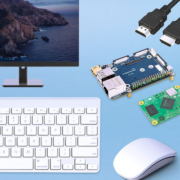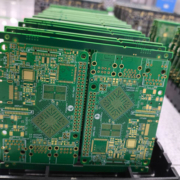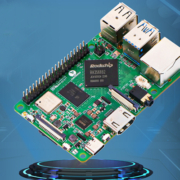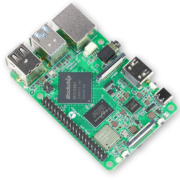What is raspberry pi?
Raspberry Pi is one of the most innovative inventions for computing due to its size, portability, price, and flexibility. This small sized and powerful computer which can encourage students to learn computer science was developed by the United Kingdom’s Raspberry Pi Foundation in 2012. However, over the years it has evolved into a key tool across various industries, spanning from simple DIY projects to advanced commercial applications. In this text, let’s explore what Raspberry Pi is, its core features, and what makes it a game — changer.
1:Understanding Raspberry Pi
Raspberry Pi is primarily considered a single-board computer or SBC, which is fundamentally a complete computer that integrates all components into a single circuit board. It is also referred to as a peripheral interface adapter board. It has the size of a credit card and contains vital elements such as a CPU, RAM, USB slots, HDMI outputs, Ethernet ports, and connection capability through Wi-Fi and Bluetooth.
The models of Raspberry Pi started from Raspberry Pi 1 and as of 2024, these models include Raspberry Pi 5. Each evolving generation brings more powerful features like increased processing speed, memory, and multimedia capabilities.
Critical hardware components usually encompass the following:
- ARM-based processors (Broadcom SoC)
- GPIO (General-Purpose Input/Output) pins for interfacing with the physical world
- MicroSD slot for external storage devices
- Ethernet or Wi-Fi connections to other networks
- USB sockets for peripheral devices
The Raspberry Pi can run a range of operating systems, one of which is particularly favored – Raspberry Pi OS (previously known as Raspbian) which is tailored for Raspberry devices as a Debian Linux distribution.
2. Major Uses of Raspberry Pi
The low cost and high adaptability of Raspberry Pi allows him to be used throughout various sectors.
- a) Teaching and Coding The initial purpose was to teach young people to code. It is offered in languages Python, Java, C++, and Scratch.
- b) IoT and Home Automation Functions as a server for smart home control panels, IoT hubs, or even as media centers (using software such as Home Assistant, OpenHAB). Very useful for building complex automation systems at a lower price.
- c) DIY Projects and Prototyping Great for hobbyists interested in building robots, weather stations, smart mirrors, and security systems. Excellent in supporting provided at lower prices by hardware startups.
- d) Commercial and Industrial Applications Used in kiosks, digital signage, on-line transaction machines, and even in factory automation systems. Customizable light Linux environment suitable for various specific applications.
3. Key Advantages of Raspberry Pi
What are the advantages of Raspberry Pi that make it such a popular sensation?
- Here are the primary factors: Economy: The entry prives start at $10 and can go up to $35.
- Versatility: Can be used for interfacing with a large list of sensors, displays and peripherals.
- Support: Massive available community resources across the globe which provide tutorials, libraries, and troubleshooting support.
- Power Consumption: Uses a very low amount of power compared to normal PCs. Custom Build: Can be adoped for personal, educational and business purposes. Adapatability: Contribution of many to the software and hardware makes it very easy to modify.
4. Use of Raspberry Pi in Smart Home Control Panels
Currently, one of the withstanding options for Raspberry Pi is working on the development of smart home control panels. Its GPIO pins, network capabilities and small size means it can serve as the heart for a smart home ecosystem. When paired with Home Assistant or OpenHAB, Raspberry Pi is capable of controlling lights, guarding systems, thermostats, and multimedia contraptions which can all be accessed through the custom tailored interface. A lot of users even go the extra mile and place the Raspberry Pi into a wall mounted touch panel transforming it into an extremely cheap smart home solution in comparison to the costly commercial options. For businesses like Portworld, taking advantage of these features makes it easy to create cost effective, flexible, highly integrated, and user scenario tailored custom smart home devices.
5. Future of Raspberry Pi
The prospects of Raspberry Pi are extraordinarily bright: More Powerful Models: Future iterations are likely to bridge the gap even further, as the recently launched Raspberry Pi 5 offers more power akin to entry-level PCs. Edge Computing and AI: Current models are already capable of performing lightweight machine learning tasks, and future ones will further bolster those abilities. Education 2.0: With a focus on AI and robotics education, Raspberry Pi will remain integral to hands-on learning.
Portworld’s PortPi: An Industrial-Grade Alternative to Raspberry Pi
While Raspberry Pi has gained global success for its affordability and flexibility, many businesses require similar platforms with enhanced durability and industrial-grade features. This is where Portworld steps in with its PortPi series, designed specifically for professional and commercial applications.
PortPi follows the same concept of a compact, single-board computer but is optimized for more demanding environments such as smart home systems, industrial automation, commercial kiosks, and embedded control terminals.
Key advantages of PortPi include:
- High-performance processors supporting Android, Linux, and other operating systems.
- Industrial-grade components for enhanced temperature resistance and anti-interference capabilities.
- A wider range of interfaces, including multiple UART, CAN, and RS485 ports for connecting various sensors and actuators.
- Customizable modules based on customer needs, such as PoE power supply and HD display outputs.
- Comprehensive software support, with Portworld’s engineering team available for system customization and integration.










